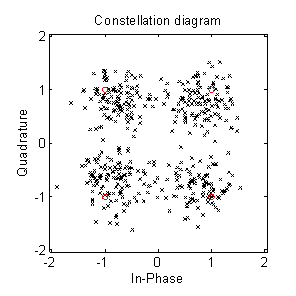Ultrasonic Communications
Introduction
The AIM Lab is interested in all forms of wireless communications, but in particular in Ultrasonic Communications. We are fortunate to work with the Communication Systems Laboratory led by Prof Roger Green, whose main activities in Optical Wireless Communications can be seen, inter alia, at http://www2.warwick.ac.uk/fac/sci/eng/research/communications/
A wireless keyboard using ultrasonic communications
We have developed and characterised an ultrasonic communication system using electrostatic transducers, and have achieved a data rate of up to 1 Mb/s, within a reasonable range of 1-2 metres. This new technology could be an alternative approach to the existing R.F. and infrared based communication systems for short range secure communication.
Figures 1 to 3 demonstrates the feasibility of such technology by converting a standard wired keyboard into a wireless one using ultrasound. The keyboard binary output is transmitted using Frequency shift keying (FSK) modulation.
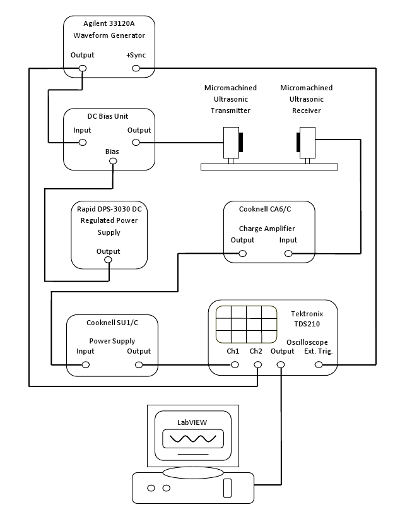
Figure 1: Schematic of experimental setup
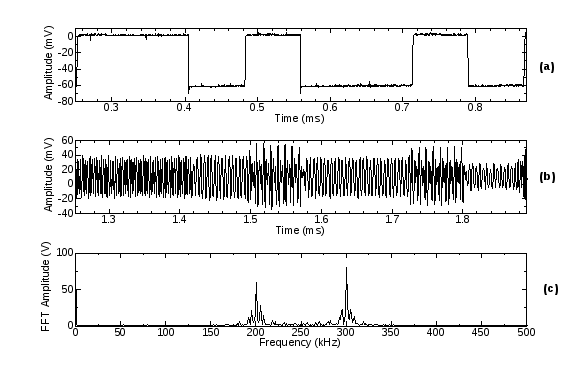
Figure 2: (a) baseband binary stream (00101101) at 10 kbps, generated by pressing keystroke ‘L’ on a standard keyboard (b) transmitted FSK signal with 200 kHz carrier representing logic ‘0’s, and 300 kHz carrier representing logic ‘1’s , and (c) its corresponding spectrum.
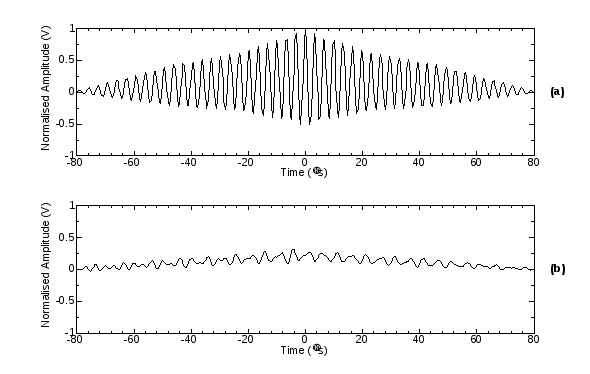
Figure 3: Detection of baseband signal using cross-correction (a) 1st bit and (b) 3rd bit.
Different modulation schemes
We have investigated different modulation schemes for transmitting data at reasonable data rates across short ranges (within a room). Figure 4 shows the results when different modulation schemes are implemented for transmitting the baseband binary stream. These are in the form of constellation diagrams, where clustering of the data points is an indication of good performance.


Figure 4: Constellation diagram for transmitted (a) MSK signal at 400 kbps and (b) 8PSK signal at 800 kbps.
Factors affecting propagation of signal
The use of ultrasound for communications is complicated by additional factors. First, the transducers used do not have a flat response. Secondly, the ultrasonic field radiated by a transducer is not uniform in all directions, and directionality of the transducer has to be taken into account. Finally, there is freqiency-dependant attenuation of ultrasound in air, which needs to be taken into account, and which effectiviely limits the technique to frequencies below 1 MHz.
Figure 5 shows the process of how the channel is modelled, by using three sub-responses, namely the transducer response, spatial field response and attenuation response.

Figure 5: Modelling of an ultrasonic communication channel (a) Original QPSK waveform (right) and spectrum (left). This is then modified by (b) transducer, (c) transducer + attenuation and (d) transducer + attenuation + spatial field response. The receiver is assumed to be positioned off-axis with z = 200 mm, and x = 25 mm.
These effects, when modelled, can be used as the basis for adaptive equalisation. Figures 6 and 7 shows the performance gain when adaptive equalisation is used with an 8PSK modulated signal, running at 800 kbps across 500 mm air gap. Here, as indicated in Figure 6(b), high frequency components (>400 Hz) are weakened dramatically due to the channel response. Using RLS based equaliser, the weakened spectrum can be improved so that a better constellation can be obtained, as shown in Figure 7(b).

Figure 6: Comparison of (a) ideal (b) transmitted and (c) equalised QPSK spectrum, at a data rate of 800 kbps across a 500 mm air gap.
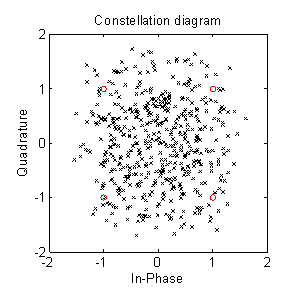 |
|
| (a) | (b) |
Figure 7: Comparison of constellation diagrams (a) without and (b) with adaptive equalisation using RLS algorithm.
Related References
C.Li, D.A. Hutchins and R.J. Green, “Short range ultrasonic communications in air using quadrature modulation”, IEEE Transactions on Ultrasonics, Ferroelectrics and Frequency Control 56, 2060-2072 (2009).
C. Li, D.A. Hutchins and R.J. Green, “Short-range ultrasonic digital communications in air”, IEEE Trans. Ultras. Ferr. Freq. Contr. 55, 908-918 (2008).

